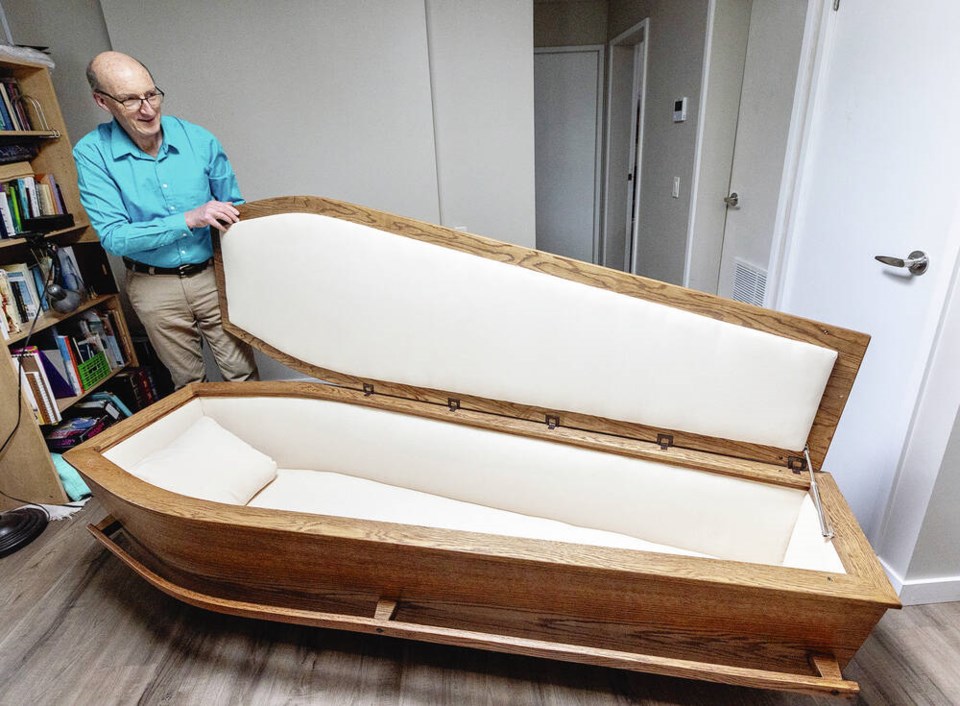When Philip Thompson’s 20-year-old son died, the Sidney resident found an unusual way to process his grief.
Thompson’s son, Nathan Paul Thompson, died in the United Kingdom in 2012, and by the time Thompson arrived there, the funeral arrangements were complete.
When he returned home from the funeral, Thompson felt a need to do something because he hadn’t been able to participate in the funeral planning, but he didn’t know exactly what.
It took some time before Thompson settled on exactly what he needed to do to let his grief out: “I thought: ‘I’m going to make a coffin.’ ”
Losing a loved one means you can no longer show your love in the ways you used to, such as by making them a meal, or supporting them through challenges, he said.
“There’s nowhere to apply that love now. That’s what grief is. It’s an absence of a place to apply the love that you have for the person that’s now gone,” he said.
So you have to do something else instead.
For the trained woodworker, that something else became making coffins. The work gave Thompson a ritual to acknowledge and work through his grief.
“In the making of the coffin, I acknowledged that I wanted to be part of saying goodbye and all the planning,” he said.
Thompson has made four in total. He sold two to a funeral director and one to a woman who wanted to use the coffin as a way to talk to her son, who has developmental and physical disabilities, about her eventual death.
Judy Hoffman, 72, is keeping the coffin in her Sooke home. As her son’s main carer, she wants to prepare him for what will happen when she dies one day and plans to use the coffin to spark conversations about her funeral.
“So that he realizes we have people in our lives that care about both of us, that even though I’m not there, he’s not going to be alone,” she said.
Thompson’s fourth coffin currently sits in his living room while he tries to sell it on Facebook Marketplace.
“Simple and elegant, this coffin is curved at the shoulders,” the ad reads. “The interior is padded, unbleached cotton, as is the pillow.”
Before moving indoors, the coffin sat in his enclosed porch for about five years. Thompson now feels he’s progressed in his grief journey to a point where he no longer needs the coffin. That doesn’t mean he’s over his grief. The purpose of grief is not to get over it or move on, he said. It’s to adjust to a new way of valuing and “remembering,” or adding back the family member, Thompson said.
“When you deliberately remember, re-include, you bring some of that person back. There is some healing in that,” he said.
Thompson said he has received about 100 responses to the ad, some of which are from people who just want to share that they have experienced a loss.
He has sought not to make sense of Nathan’s death, but to make meaning. He encourages anyone struggling with grief to find a ritual to process their loss.
“Something simple. Don’t go as far as making a coffin. I don’t recommend that,” he said, with a laugh. “Do something to acknowledge the loss. Don’t pretend it’s not there.”
>>> To comment on this article, write a letter to the editor: [email protected]



